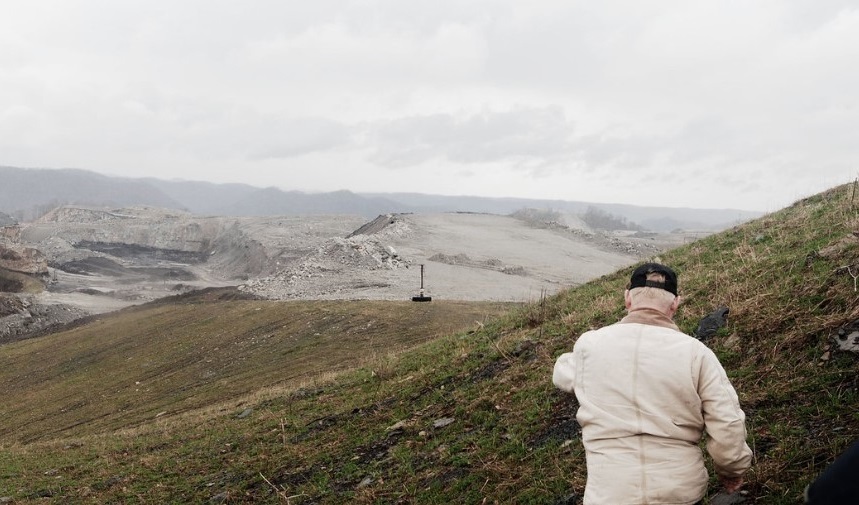In the heart of West Virginia, somewhere along a 22-mile stretch of the Elk River, swims one of the world’s rarest fish, the diamond darter. This tiny partly-translucent fish buries itself beneath grains of sand and gravel in the river-bottom during the day, just its black eyes peeping out as it perhaps hunts or hides from predators itself. The darter’s silvery sides sparkle when it emerges in the evening, giving rise to its gem-inspired name.
It used to be that, if you were lucky and eagle-eyed, you might encounter a diamond darter in many places along the Ohio River Valley, not just this tiny stretch of the Elk River. But in the intervening decades, the region’s rivers were dammed or channeled and the fossil fuel era dawned across Appalachia. Meanwhile, the diamond darter’s numbers dwindled to the point that up until 1980, when biologists rediscovered the Elk River population, the fish was believed extinct.
Dubbed one of the “Desperate Dozen” imperiled species by conservationists, the diamond darter won a new lease on continued existence in 2013 when its name was added to the federal government’s list of protected endangered species.
Now, a new peer-reviewed study, published in the journal PLOS ONE, highlights how one particular form of fossil fuel extraction has pummeled the Appalachian region’s rivers and streams, including the Elk River – waters that the diamond darter and dozens of other endangered species call home.
What’s put that tiny fish in danger in recent years is big. So big in fact that it’s visible via satellites in Earth’s orbit. Perhaps because it’s so large, affecting entire landscapes all at once, it’s received sub-par attention from federal regulators under the Endangered Species Act, the new study suggests. And what we do or refuse to do to protect the endangered diamond darter could also have significant consequences for humanity’s own critical habitat, under threat from the climate crisis and the burning of fossil fuels.
Mountaintop Mining
Mountaintop removal coal mining — one of the most notoriously destructive forms of mining — has torn through over 500 mountains across Appalachia, even as coal’s dominance over American energy supplies has faded in recent years.
Mountaintop removal is a form of strip mining. Instead of tunneling into the earth following coal seams, miners clear cut forests then blast apart mountain summits and ridgelines layer by layer with explosives, and then dig out the coal seams they’ve exposed. In many cases, companies are required to return mountains to their “approximate original contour” — but mine reclamation efforts often wind up, as Scientific American put it, “unused expanses of brush with still-contaminated streams flowing nearby.” Mountaintop removal has slowed since its heyday about a decade ago, but never stopped.
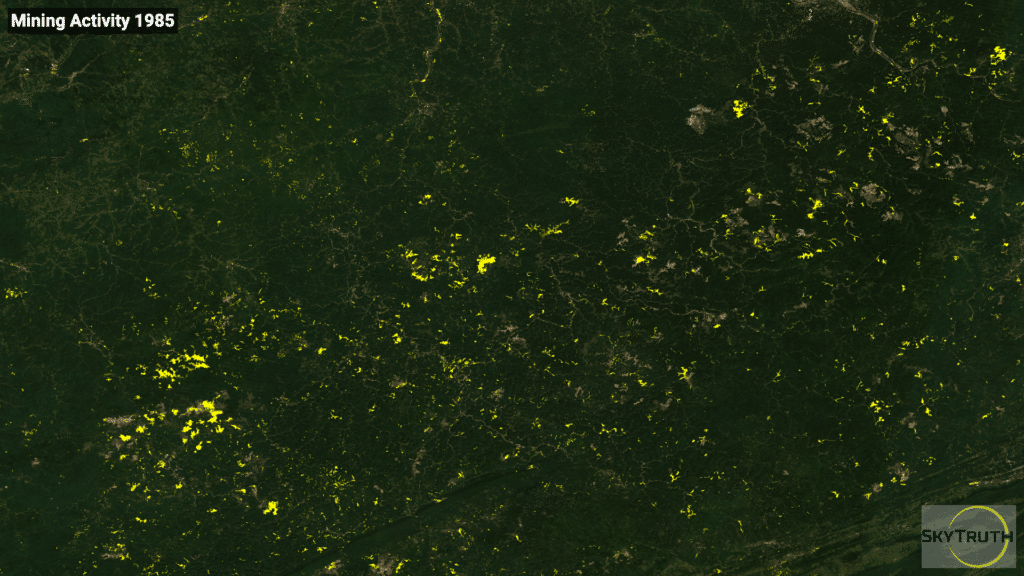
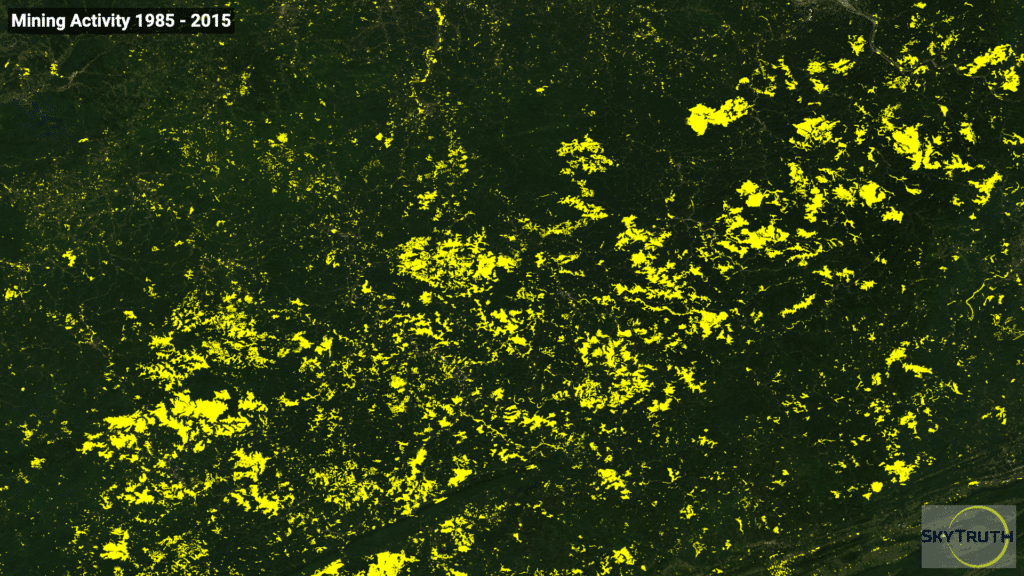
“It’s definitely not over, just talk to the folks at Coal River and they will tell you that’s not the case,” said Matt Hepler, an environmental scientist with the environmental group Appalachian Voices, referring to the Coal River Mountain area in southern West Virginia, where coal production has remained relatively high in recent years.
In fact, across the region, the decline in coal mining seems to have slowed this year, Hepler said. “There appears to be a post-pandemic uptick in coal production right now,” he said, adding that he thinks the surge will likely prove short-lived.
Any re-emergence of coal mining — particularly mountaintop removal mining — seems in stark contrast with the picture that the U.S. struggled to present of itself on climate at the COP26 conference in Glasgow. The new research highlights how, even as the U.S. tries to craft an image of itself as a leader again on climate change, it’s also effectively allowed fossil fuel companies to slide on compliance with environmental laws for decades — making it easier and more profitable to extract the fossil fuels that have already heated the entire world’s climate and caused extraordinary upheaval for people and wildlife alike.
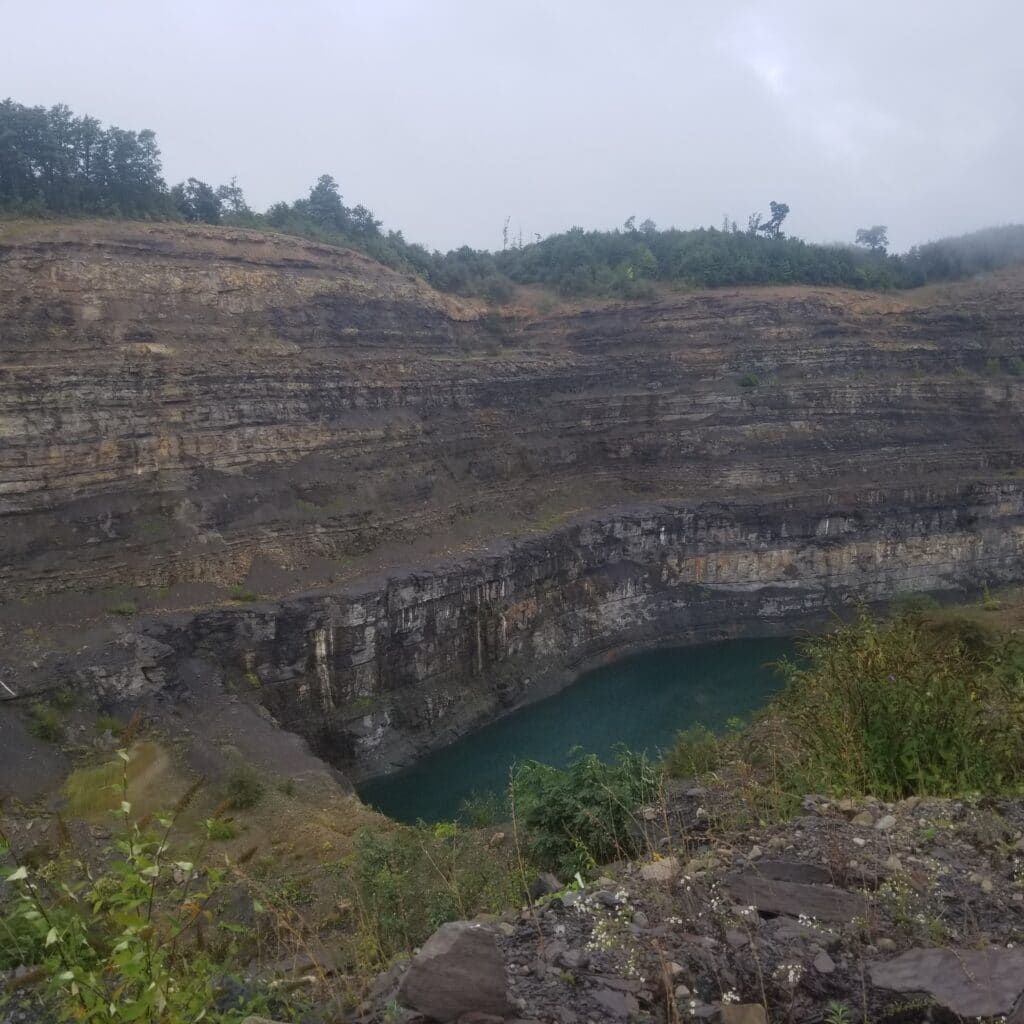
In the new paper, researchers from Defenders of Wildlife’s Center for Conservation Innovation and the satellite data nonprofit SkyTruth compared maps of surface mining from 1985 to 2015 in Kentucky, Tennessee, Virginia, and West Virginia against publicly available water quality data collected at more than 4,000 state and federal water monitoring stations over those years. Their goal was to find out more about the impact mountaintop removal mining has had on those water pollution levels.
“This research really emphasizes the interconnectedness of ecosystems and how distant human activity can have ripple effects that aren’t immediately apparent,” Mike Evans, a data scientist with Defenders of Wildlife and the paper’s lead author, said. “Being able to assess impacts at a landscape scale opens a completely new door for conservation.”
‘Potentially Lethal Levels’
The researchers found that toxicity levels for pollutants like aluminum, lead, and manganese, and for the water’s acidity — chosen both because of their links to coal mining and because they’re known to harm aquatic creatures — breached federal water quality standards thousands of times in places where mountaintop removal occurred. This happened “in streams that are important to the survival and recovery of species on the Endangered Species List,” the paper reports.
“We found that degradation in water quality progressed to potentially lethal levels for aquatic life — documenting thousands of instances in which chronic and acute water quality thresholds were exceeded between 1985 and 2015,” the researchers wrote.
There is, in fact, a state monitoring station in the Elk River stretch that the diamond darter calls home, the researchers noted, adding that it reported water quality test results 48 times during those 30 years. Dozens of the test results showed levels of metals that surged past the EPA’s safe thresholds for aquatic life. For instance, levels of aluminum, which is particularly toxic for water wildlife, exceeded the long-term safety levels 33 times and over the EPA’s “acute” levels eight times. Across all the waterways important to endangered species, aluminum levels breached chronic safe levels over 3,800 times and acute thresholds more than 870 times, the study found — with thresholds breached at more than half of the sites tested.
The paper suggests that all of this might have happened in violation of federal law.
“The repeated exceedance of acute toxicity thresholds for aquatic life within designated critical habitat could constitute an adverse modification of critical habitat — an outcome federal agencies must legally avoid” under the Endangered Species Act, the paper notes.
The Endangered Species Act requires the use of the “best available” science, lead author Mike Evans explained — and a lot has changed since 1996, when the rules affecting mountaintop removal permits were written.
“One of the things that our paper shows is that the assumptions used to make sure the permits will not violate the Endangered Species Act, while based on the best information they may have had at the time back in 1996, is almost certainly not holding up,” Evans said. “We’re seeing impacts and they’re much more severe to the imperiled species that live in those aquatic habitats than previously was thought.”
A spokesperson for the U.S. Fish and Wildlife Services, the primary federal agency named in the paper, did not respond to questions about the study’s findings and how they might affect mine permits in the future.
“These findings demand regulatory action under federal environmental laws including the Endangered Species Act and Clean Water Act, because these activities are concentrated in an area with high numbers of imperiled species,” the study states.
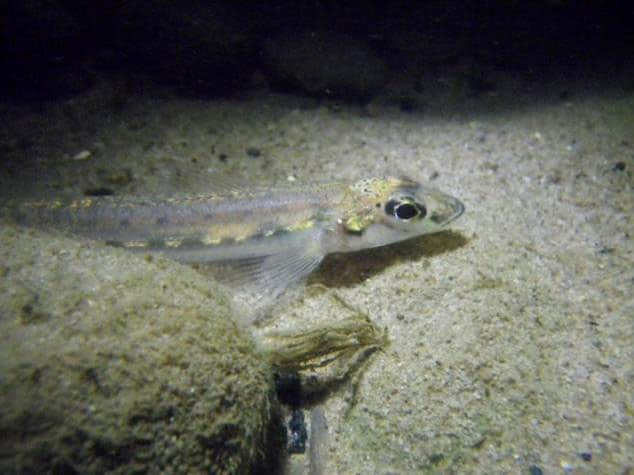
And it’s certainly not the diamond darter alone that’s feeling the brunt of this mountaintop removal-linked water pollution.
For one thing, central Appalachia is stunningly high in biodiversity. Among the other rare and threatened wild creatures living in the coal mining-impacted streams are a dozen different kinds of fish, 39 mollusks, and a wide array of crustaceans and snails, the study reports.
“More than 50 federally protected species inhabit the streams of this region, and we haven’t historically known the full impact of these mines,” said Evans, “until now.”
And then there’s one of the main reasons the Endangered Species Act was passed: because what affects wildlife also affects people — sometimes profoundly. And there is little question that the people of Appalachia have felt the impacts of mountaintop removal.
Coal’s Powerful Friends
Mountaintop removal involves, as one might imagine, a lot of blasting apart rock — kicking up a lot of dust that can be laden with heavy metals, silica, and other things that can create major health problems for people.
“Black lung is reportedly having a resurgence in the Appalachian region, as not only a growing number of miners are afflicted by it, but those living nearby as well,” Fair Planet reported in October. Black lung’s resurgence, climate advocates point out, is particularly concerning amid the Covid-19 respiratory pandemic.
And that not only affects people’s health, it also undercuts the economic benefits that the coal industry touts. “Researchers led by Michael Hendryx, a professor of public health at West Virginia University, published startling links between mountaintop mines and health problems of those in proximity to it, including cancer, cardiovascular disease, and birth defects,” The Guardian reported in September. “Between 1979 and 2005, the 70 Appalachian counties that relied most on mining had recorded, on average, more than 2,000 excess deaths each year. Viewed one way, those deaths were the cost of progress, the price of prosperity that coal could bring. But Hendryx also debunked that argument: the deaths cost $41bn a year in expenses and lost income, which was $18bn more than coal had earned the counties in salaries, tax revenue and other economic benefits.”
Nonetheless, the coal industry has attracted powerful backers. In fact, those who’ve made money in coal and those in political office are very often the same people in Appalachia, like West Virginia Governor Jim Justice and Senator Joe Manchin, both of whom made personal fortunes from the coal industry.
“It’s not a secret that Manchin, whose personal worth is in the millions, has deep ties to the fossil-fuel industry,” The New Yorker reported in October, listing pro-coal actions Manchin has taken in office, like suing the EPA and the Army Corps of Engineers in an effort to combat limits on mountaintop removal. “Last year, he received half a million dollars in dividends from Enersystems, a coal company he started in the late eighties, which is now run by his son. He is also the U.S. senator who’s received the most money in political donations from the oil, gas, and coal industries.”
Meanwhile, the U.S. has been out on the world stage, insisting that coal is fading away. “By 2030 in the United States, we won’t have coal,” John Kerry, the U.S. special envoy for climate, told Bloomberg on Tuesday in Glasgow at the COP26 climate conference. That’s in line with what the International Energy Agency said needs to happen earlier this year, emphasizing that the way to keep the climate livable involves “no new oil and gas fields” and “no new coal mines or mine extensions.”
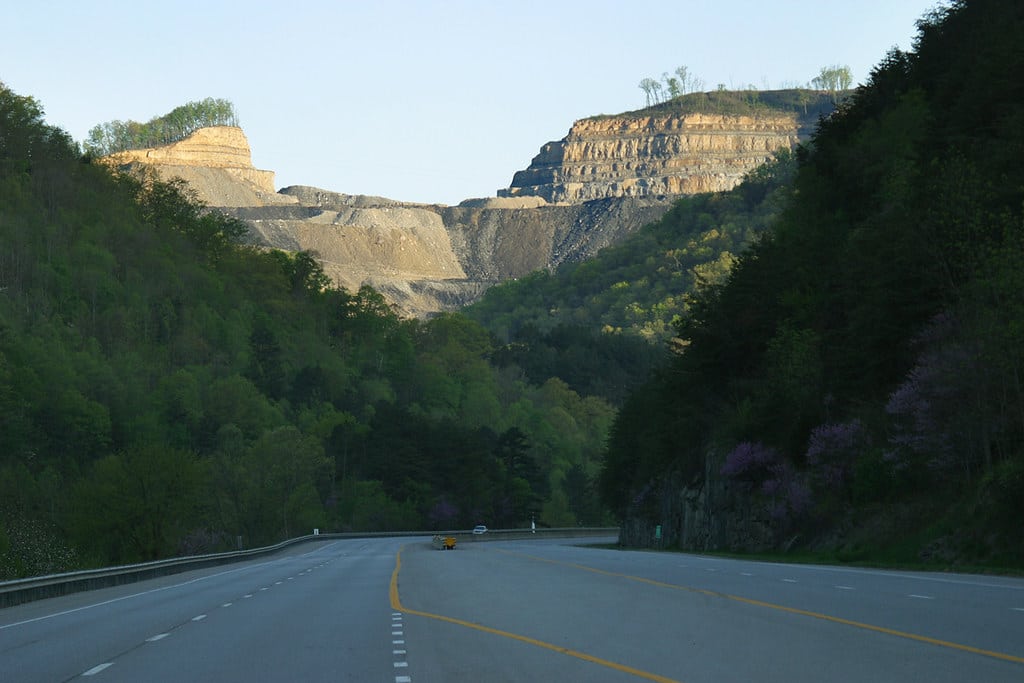
But at the moment, fossil fuel projects still have powerful friends in the U.S. So environmentalists are increasingly seizing upon newer tools like accessible satellite imagery and big data, hoping to force the federal government to take stronger action, whether that’s to protect endangered species like the diamond darter, prevent harm from abandoned coal mines, or cut climate pollution. The new paper demonstrates how expertise from organizations like SkyTruth can be matched up with other publicly available information to show where the federal government is falling short.
“I really dig the use of those datasets to monitor mine sites,” Appalachian Voices’ Hepler said, adding that he’d also conducted research into coal mining using a Google Earth engine that’s free to nonprofits. “The use of that technology to find active mines was a really cool application.”
And there’s no readily apparent reason that federal regulators shouldn’t have been able to do the same thing themselves. “The government agencies also have access to Google Earth engines the way scientists do,” Hepler, who was not one of the authors of the PLOS ONE paper, said.
Cleaning Up After Coal
And right now, another looming question for Appalachian coal is what happens when mines wind up abandoned when they’re no longer actively mined — and what kinds of messes coal mining companies will leave behind.
“Mines that do not get reclaimed properly will lead to increased problems in water quality,” Hepler explained. And that means the PLOS ONE research may also have implications for the ways that the Endangered Species Act affects the ways that state and federal regulators address mine abandonment and reclamation.
The next step, Hepler said, is to find places where abandoned mine reclamation has stalled or failed to restore land.
In the meantime, it’s possible that the PLOS ONE paper’s findings suggesting a need to update coal mining permitting standards could lead to federal action, either directly or as the result of litigation.
“That’s absolutely the hope,” said Christian Thomas, a geospatial engineer with SkyTruth. “I think this is the latest in an ongoing body of research about the impacts that surface mining has, and with each one, we get a clearer picture of both the short- and long-term impacts that this practice has on our environment and our communities and the ecosystems around us.”
That scientific understanding alone, of course, won’t bring the diamond darter back from the cusp of extinction. And today, like Appalachia’s endangered and threatened species, humanity faces climate-altering threats from continued fossil fuel expansions. The open question is, will understanding what’s happened to the diamond darter help people to avoid making our own environment more inhospitable, both for us and for them?
Because nothing the diamond darter does can possibly affect how polluted that stretch of the Elk River, its entire habitat, will be. But people are capable of taking such consequential steps. As the new research helps highlight, in many ways, we already have.
Subscribe to our newsletter
Stay up to date with DeSmog news and alerts


